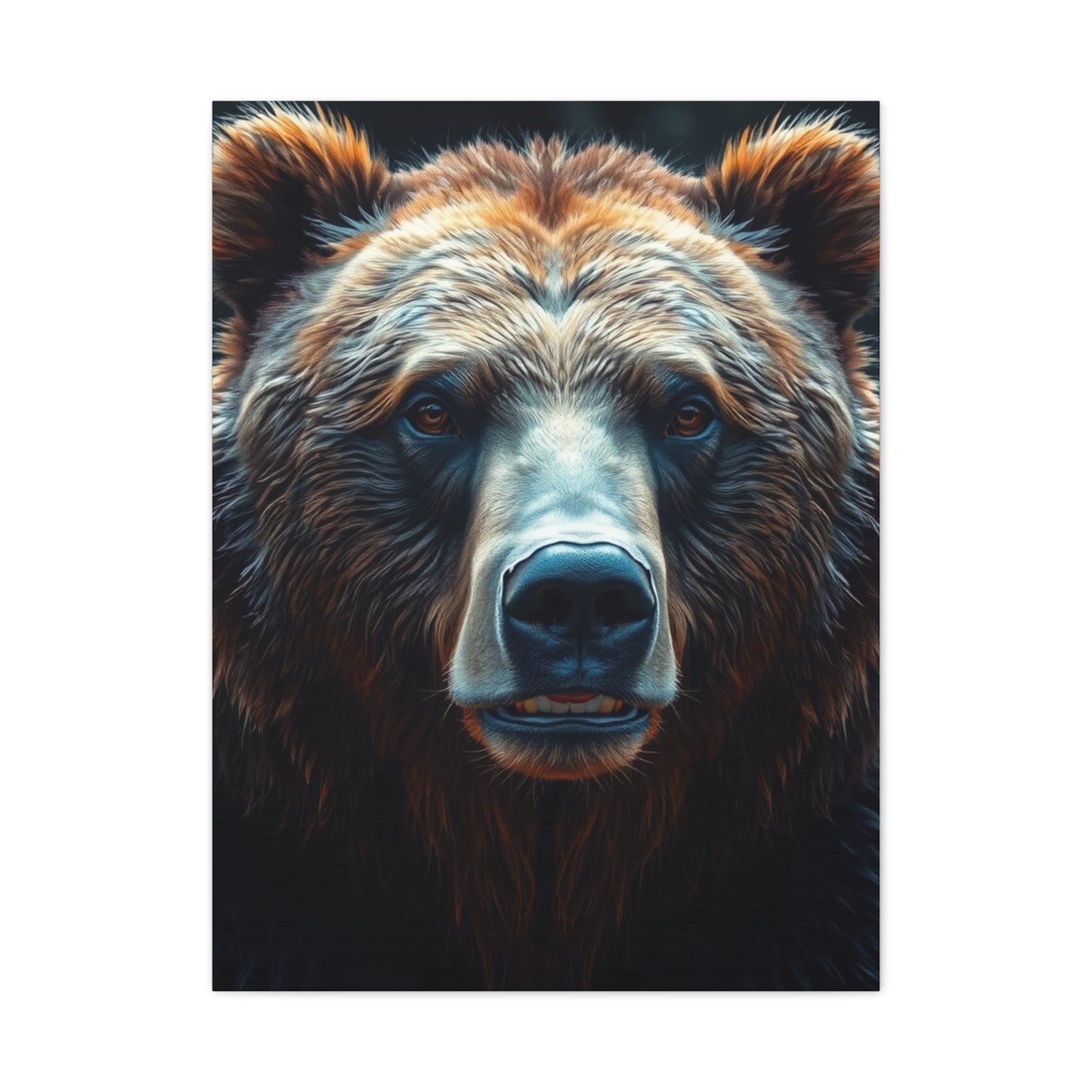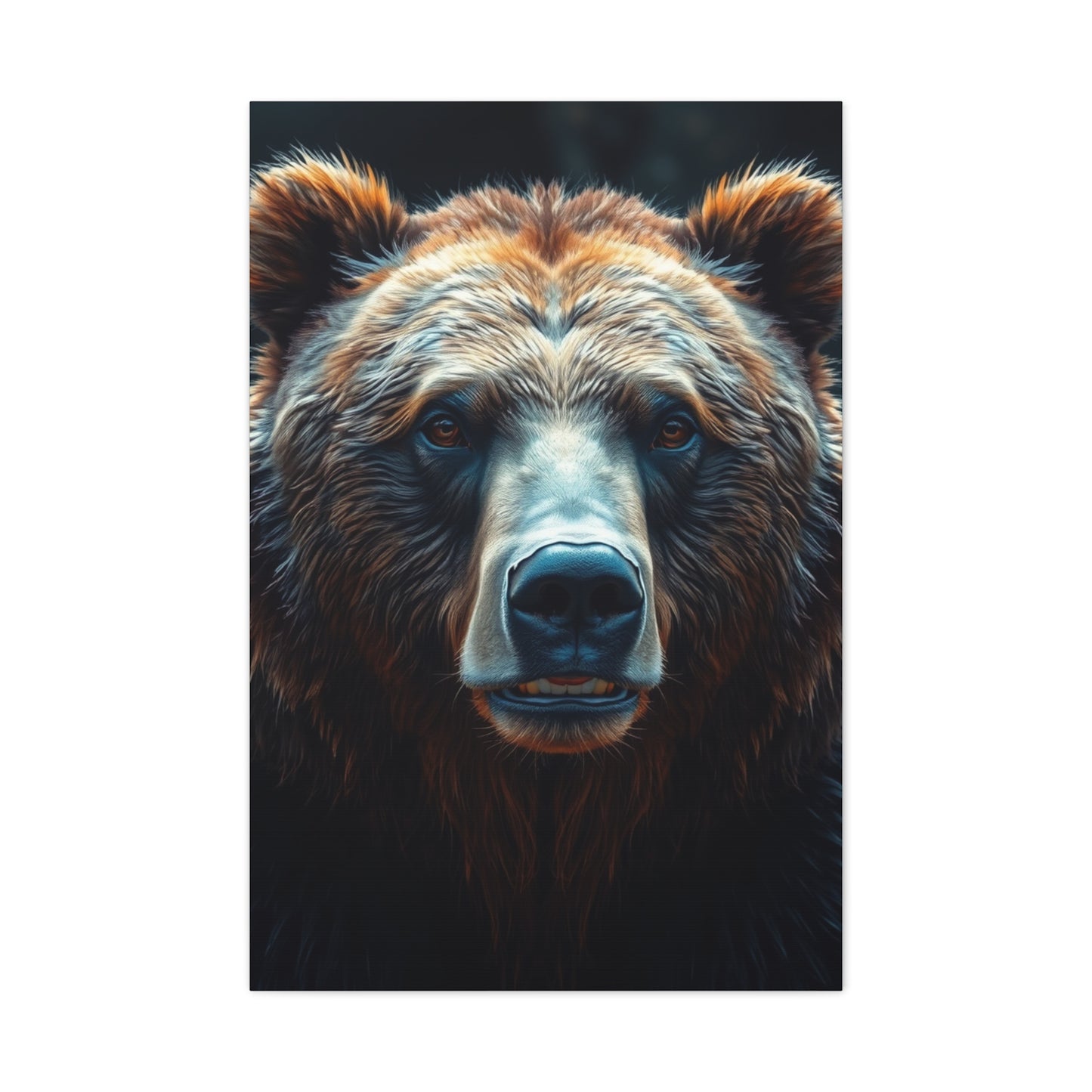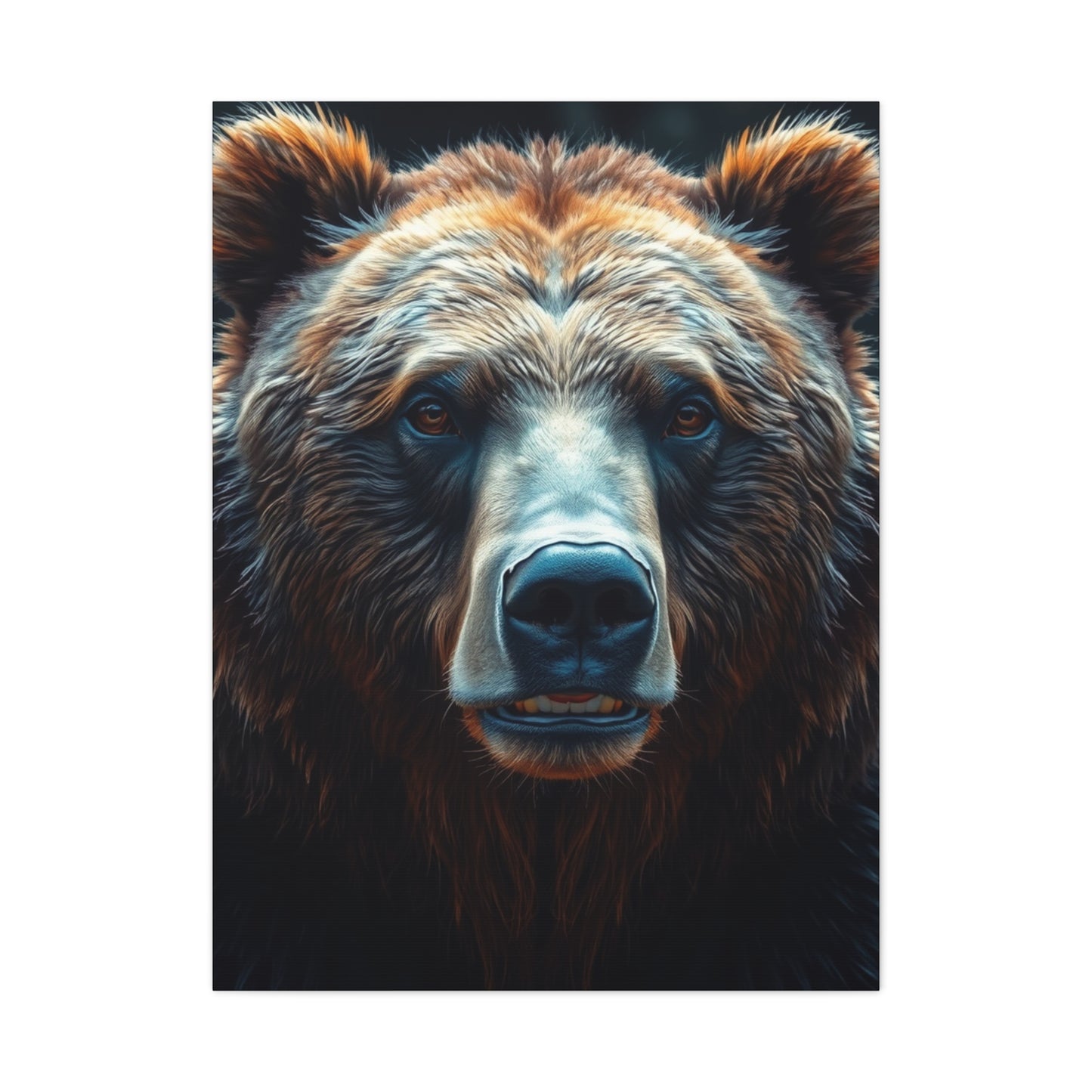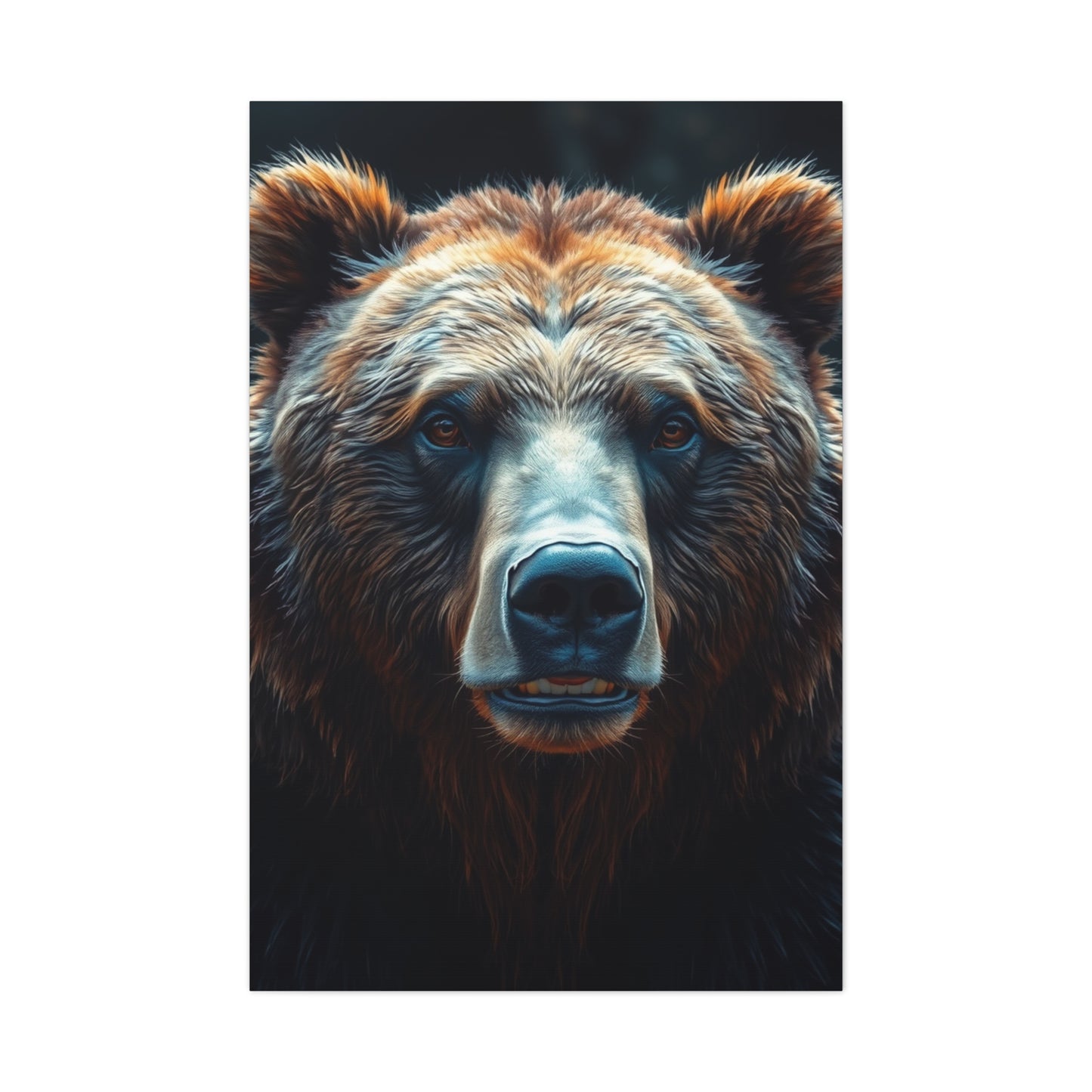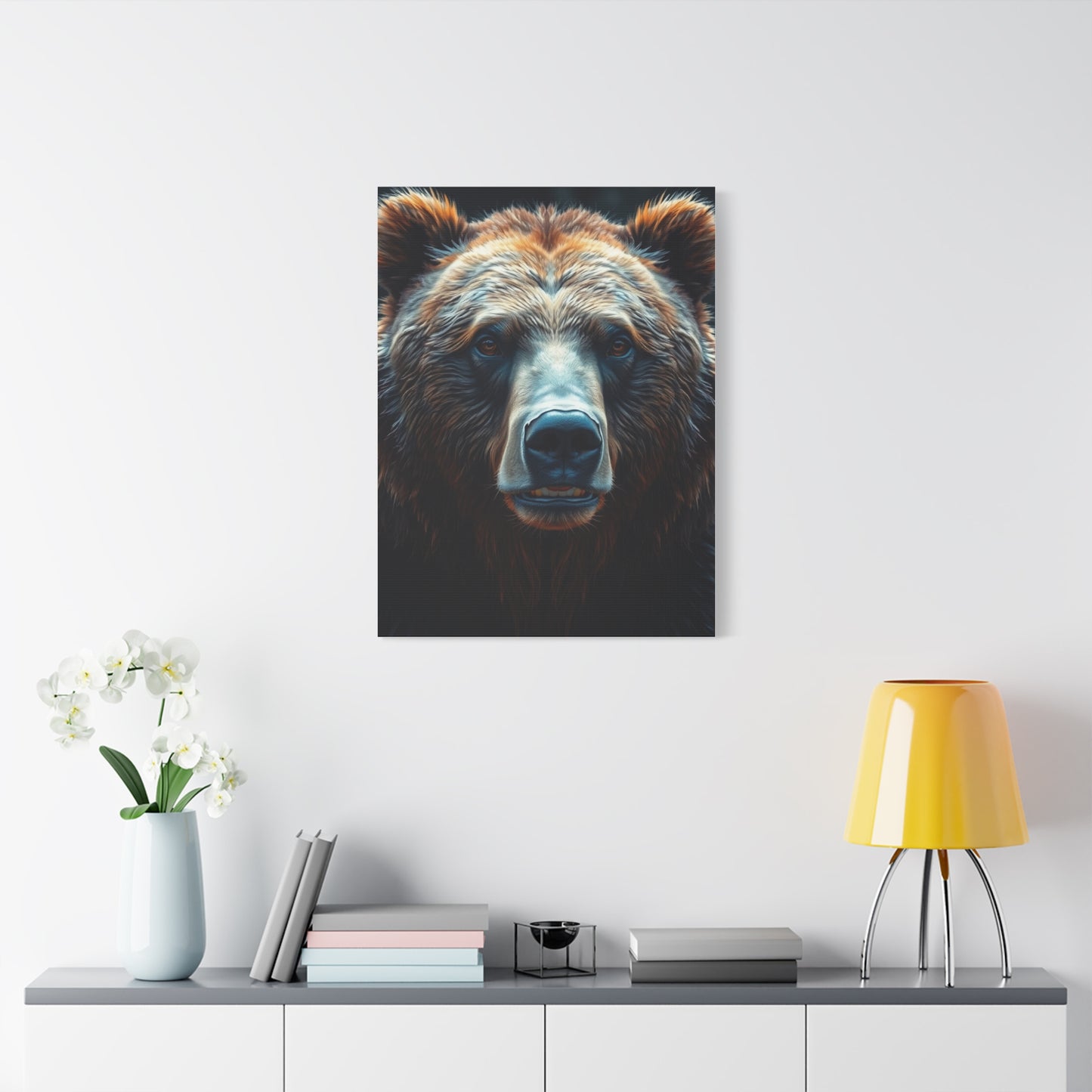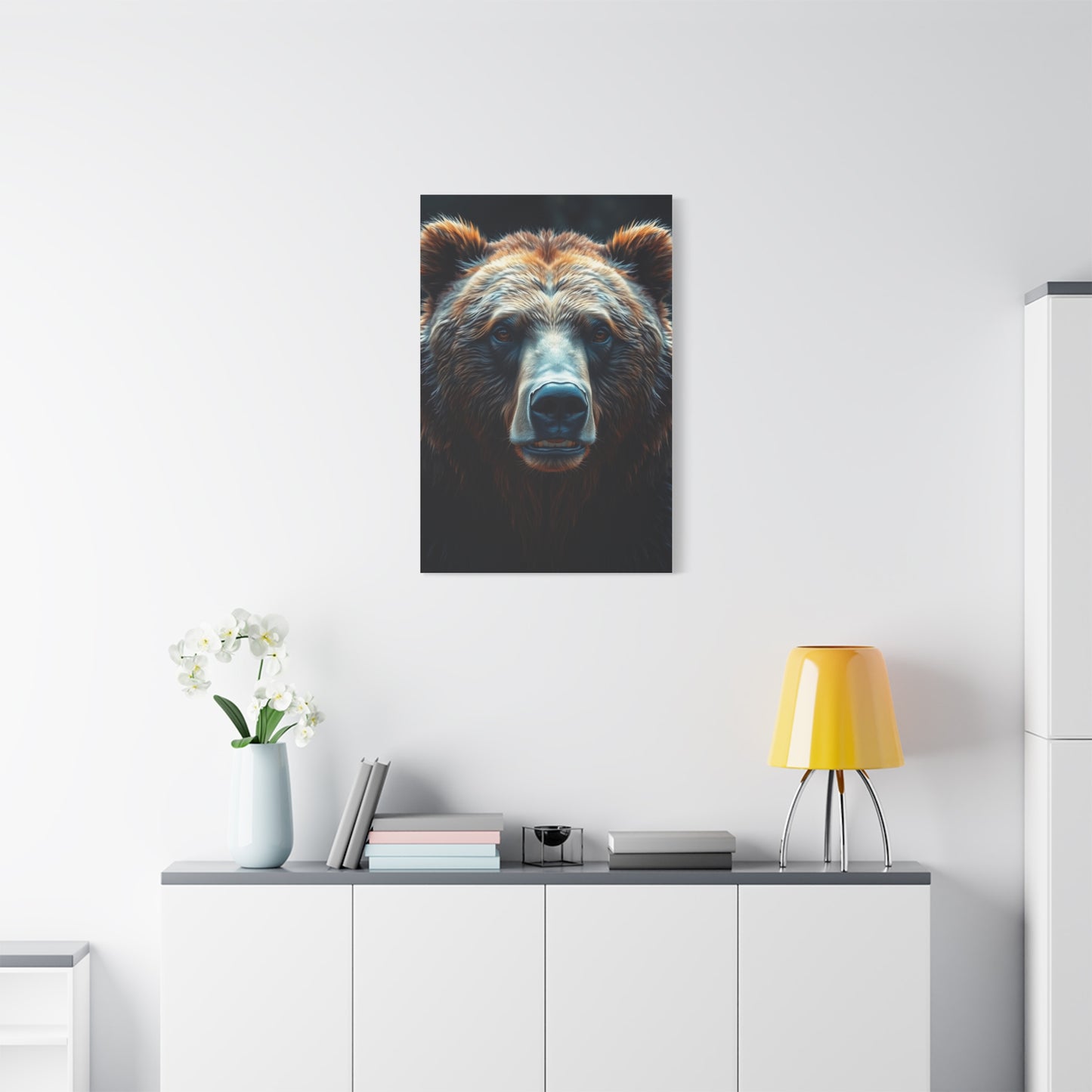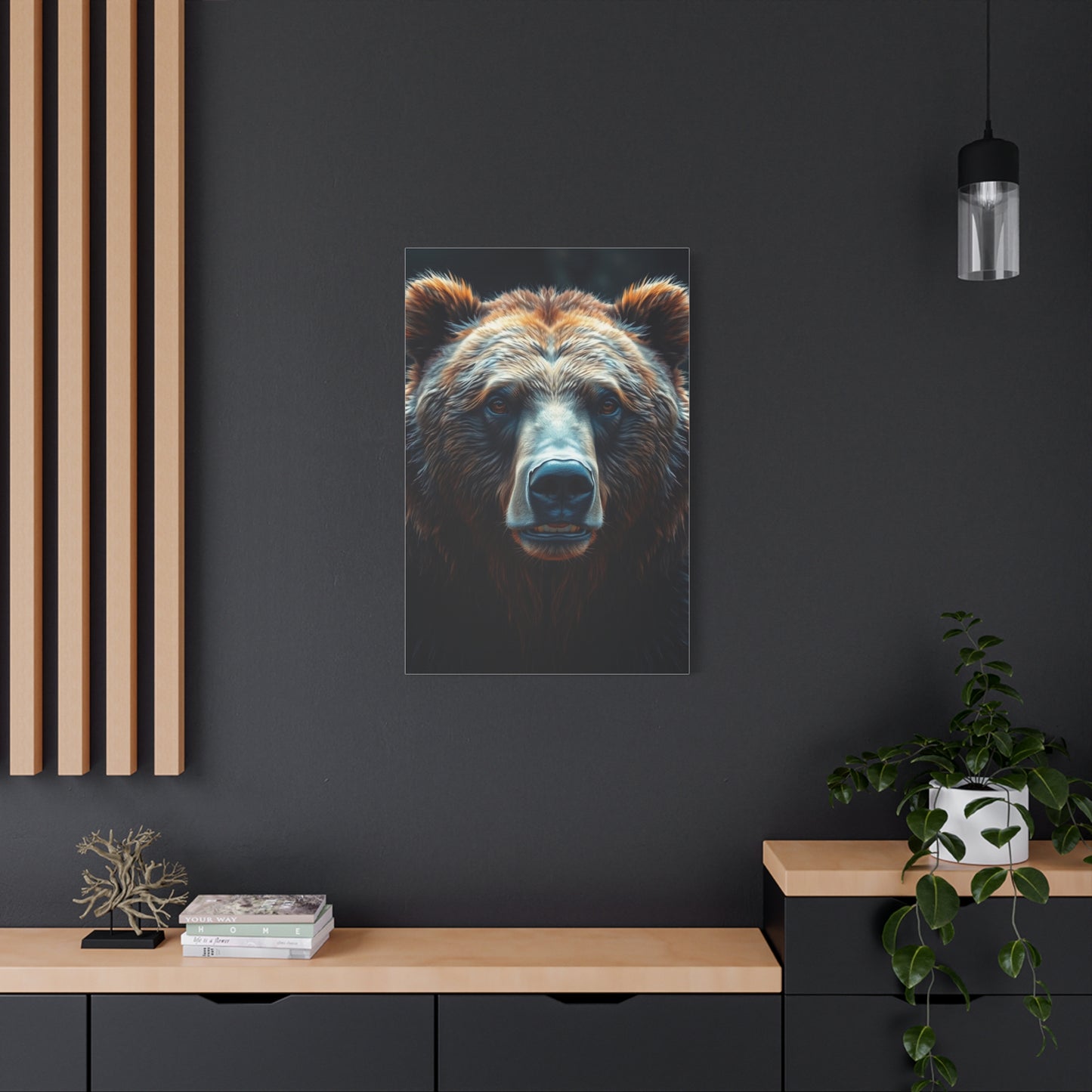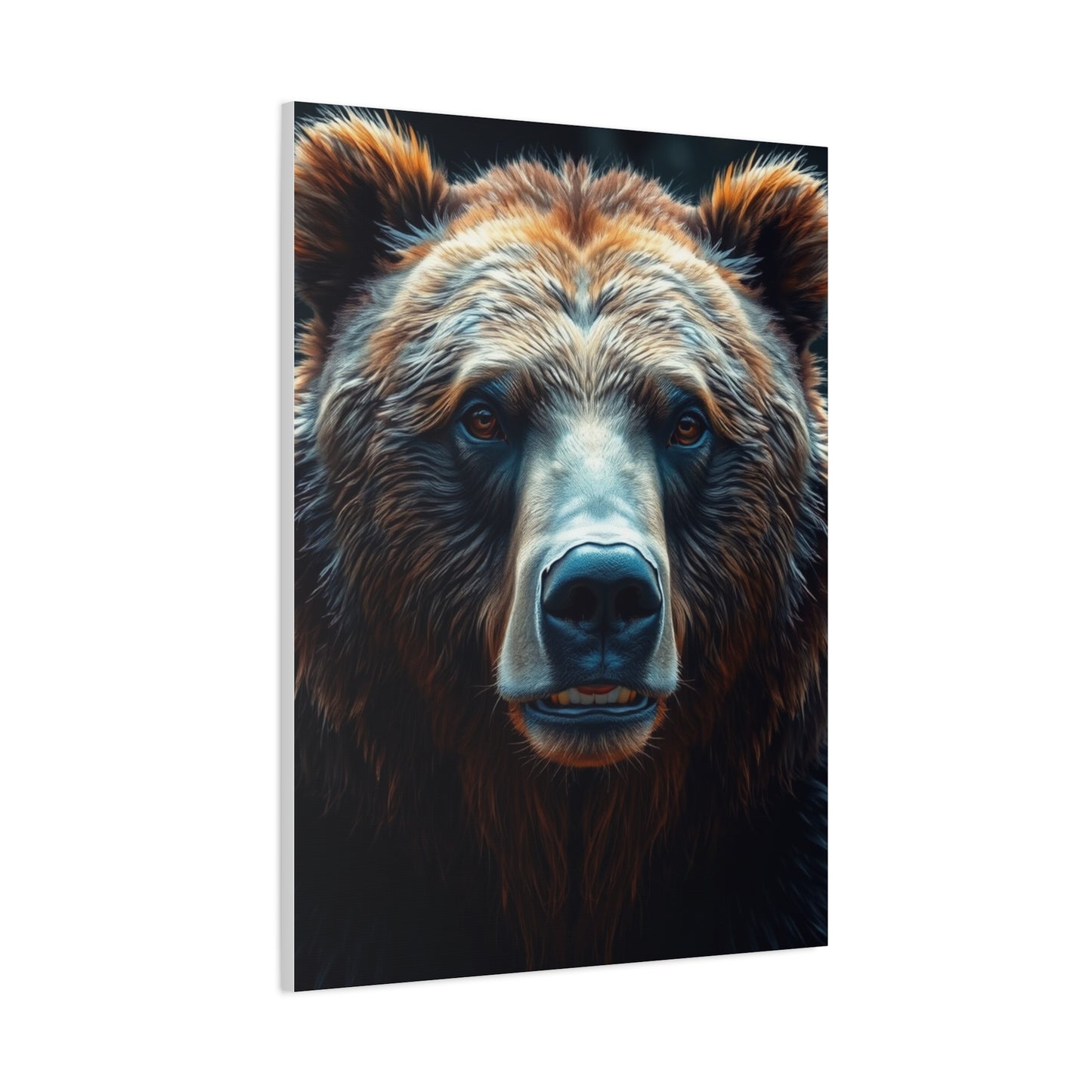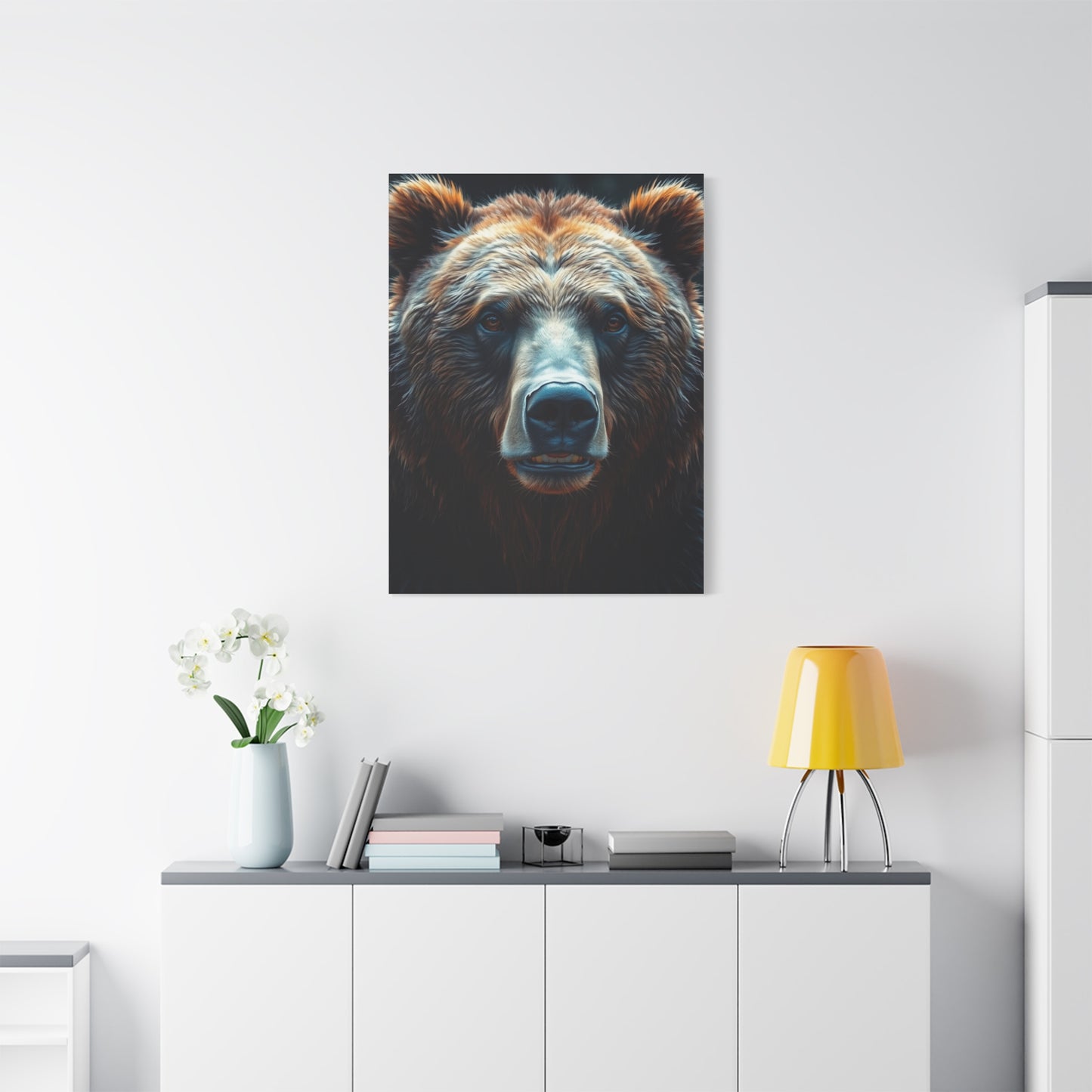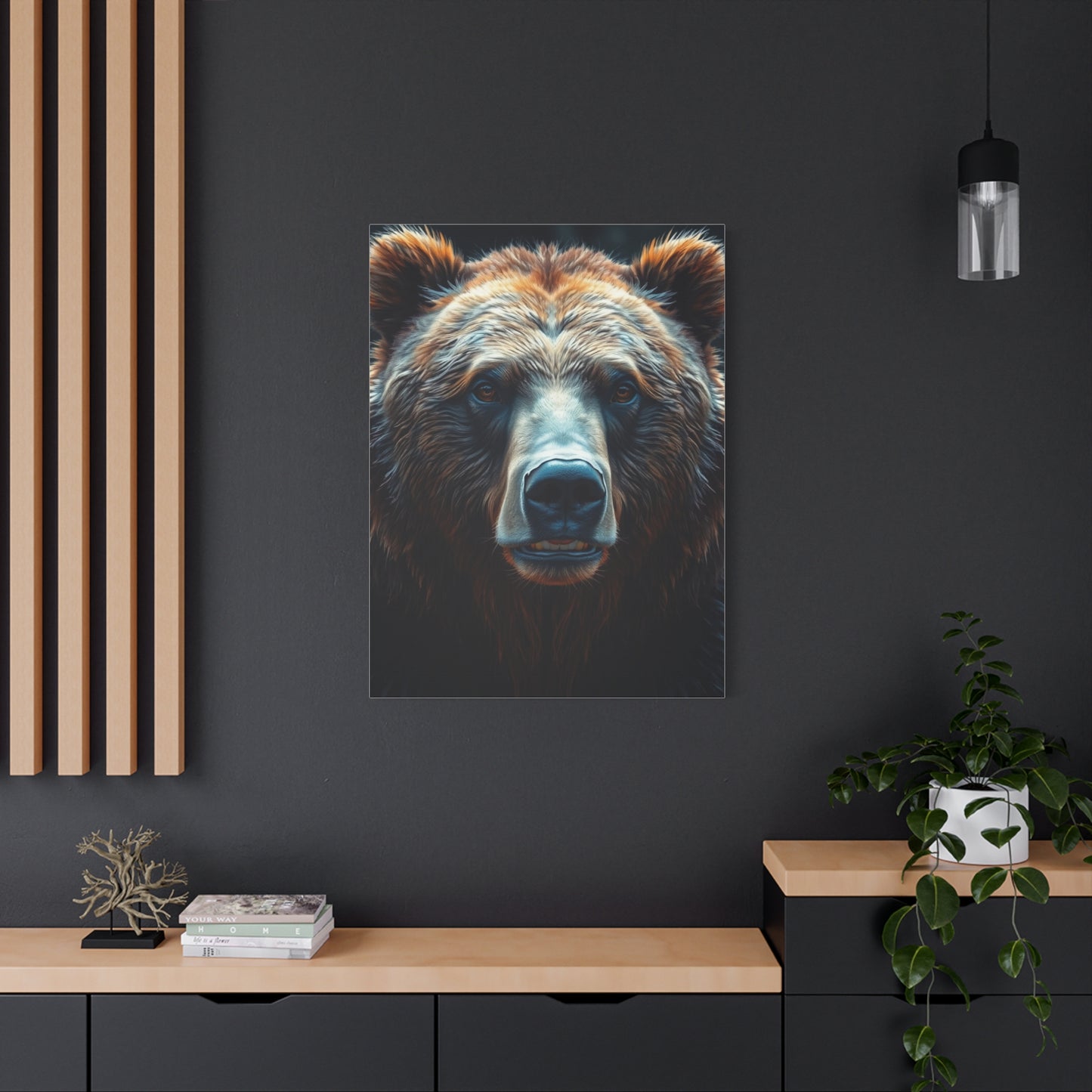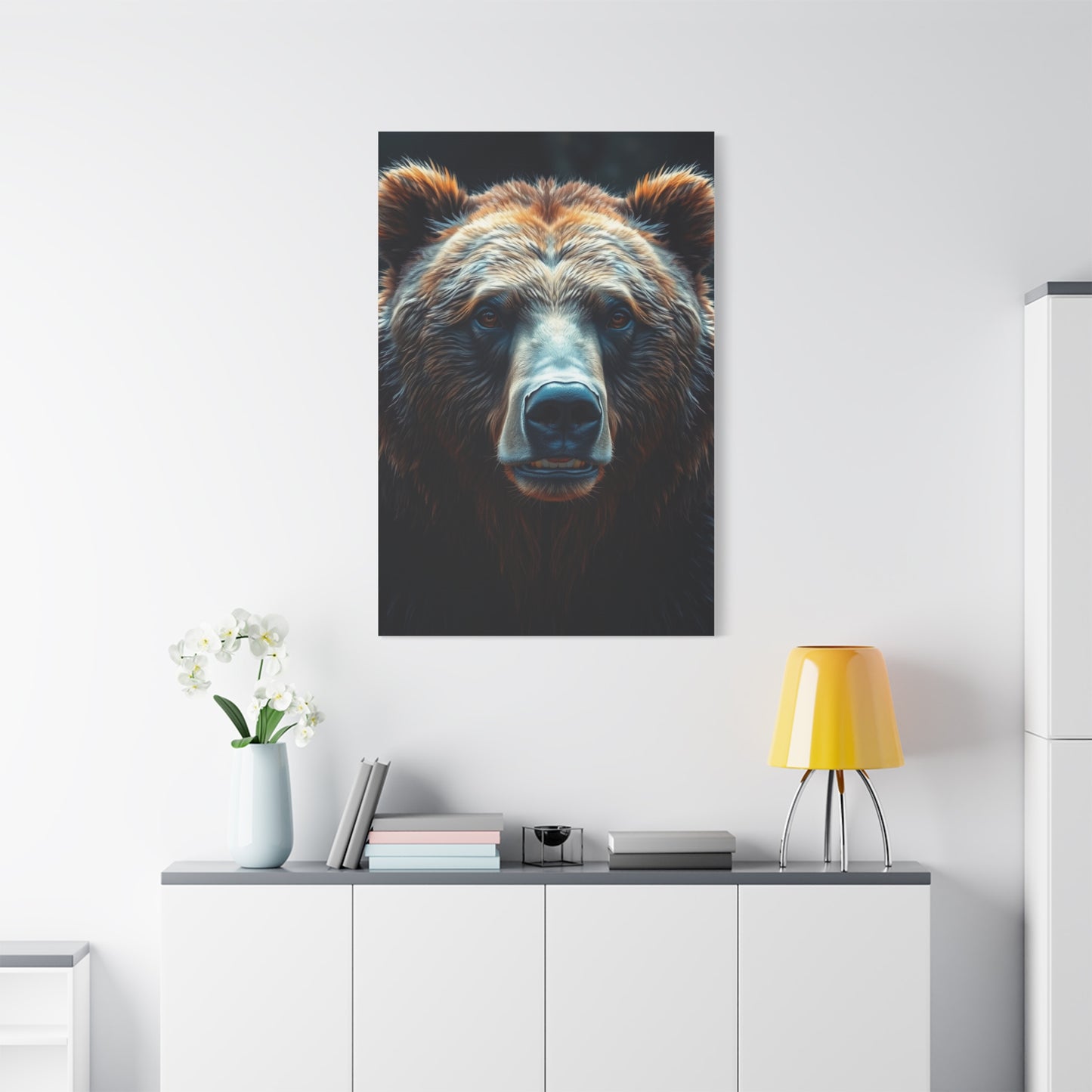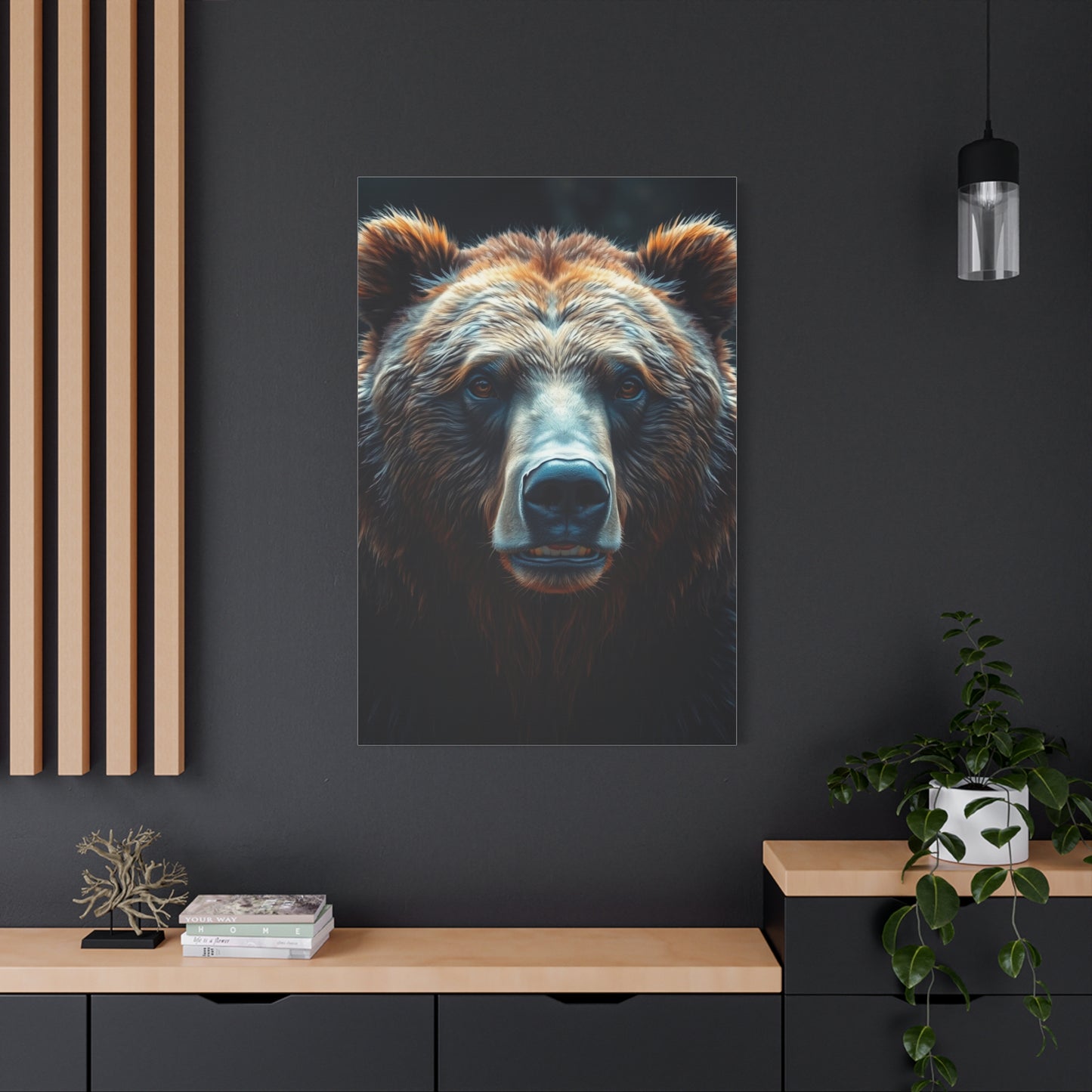Bear Portraiture Wall Art: Bringing Wildlife Majesty into Your Home
The intersection of wildlife imagery and regal aesthetics has created a fascinating niche in contemporary home decoration. When majestic bears are reimagined through the lens of aristocratic portraiture, they transform into captivating focal points that bridge the gap between natural beauty and refined elegance. These artistic interpretations present bears adorned in period clothing, complete with elaborate costumes and dignified poses that mirror the grand portraits of historical nobility. The result is a unique visual language that speaks to both our appreciation for wilderness and our fascination with ceremonial grandeur.
Canvas prints featuring these distinguished animal subjects have surged in popularity among homeowners, interior designers, and art collectors who seek distinctive pieces that spark conversation while maintaining sophisticated appeal. Unlike traditional wildlife photography or conventional animal paintings, these creative works inject personality and whimsy into formal settings without sacrificing visual impact. The juxtaposition of raw natural power with cultivated refinement creates an intriguing tension that draws viewers in and invites repeated contemplation.
The versatility of these printed canvas artworks makes them suitable for various residential and commercial environments. From contemporary lofts to traditional estates, from corporate offices to boutique hotels, the adaptable nature of aristocratic animal imagery allows it to complement diverse decorating schemes. The substantial presence of a bear, combined with the cultural associations of nobility and status, creates artwork that commands attention while remaining accessible and engaging.
Modern printing technology has elevated canvas reproduction to museum-quality standards, ensuring that these artistic visions maintain their vibrancy and detail for years. High-resolution imaging captures every nuance of the original artwork, from the texture of period fabrics to the subtle expressions in the subject's eyes. The canvas medium itself adds dimension and authenticity, creating a tangible presence that flat paper prints cannot match.
Context of Animal Portraiture in Fine Arts
The tradition of depicting animals in formal portraiture settings extends back centuries, though it has evolved significantly from its origins. During the Renaissance and Baroque periods, artists occasionally included beloved pets in family portraits, particularly dogs and horses that represented status and wealth. These animals appeared as companions to human subjects, painted with careful attention to their physical characteristics and the emotional bonds they shared with their owners.
By the Victorian era, pet portraiture had emerged as a distinct genre, with commissioned paintings celebrating favorite animals as worthy subjects in their own right. Wealthy patrons employed skilled artists to immortalize their prized hunting dogs, show horses, and even exotic animals acquired through colonial expeditions. These portraits followed many of the same compositional rules and lighting techniques used for human subjects, lending the animals a dignity and importance that reflected their value to their owners.
The anthropomorphization of animals in art has even deeper roots, appearing in medieval manuscripts, fables, and allegorical paintings where creatures represented human virtues and vices. Foxes symbolized cunning, lions embodied courage, and bears often represented strength and ferocity. Artists used these animal stand-ins to comment on human nature and society while avoiding direct criticism of powerful figures.
Contemporary interpretations of aristocratic animal portraits draw from this rich artistic heritage while adding layers of irony, humor, and commentary. Modern artists recognize the inherent absurdity in dressing a wild predator in powdered wigs and velvet doublets, yet they execute these visions with such technical skill and attention to period detail that the results transcend mere novelty. The best examples achieve a balance between playfulness and craftsmanship that honors both the animal subjects and the artistic traditions being referenced.
This genre also reflects our changing relationship with wildlife and nature. As urbanization distances more people from direct contact with wild animals, artistic representations become important touchstones that keep these creatures present in our cultural consciousness. Depicting them in human clothing and settings creates an approachable bridge that makes viewers consider these animals as individuals rather than abstract concepts.
Psychological Appeal of Distinguished Animal Imagery
The human response to anthropomorphized animals operates on multiple psychological levels, tapping into both conscious aesthetic preferences and deeper cognitive patterns. We are naturally drawn to faces, particularly eyes, which triggers our social recognition systems. When artists give animal subjects human-like poses and expressions while maintaining their distinctive features, they create images that engage our empathy and imagination simultaneously.
Bears specifically carry powerful symbolic weight across cultures and throughout history. They represent strength, protection, maternal care, and the untamed wilderness. Native American traditions revered bears as spirit guides and powerful totems. European folklore featured bears as both fearsome adversaries and wise forest guardians. This deep cultural resonance means that bear imagery carries emotional significance beyond simple aesthetic appeal.
Adding aristocratic elements to bear portraits creates fascinating cognitive dissonance. Our brains recognize the incongruity between a wild predator and formal human attire, generating a moment of surprise that captures attention. However, the skillful execution and internal consistency of the image resolves this dissonance into amusement and appreciation. This psychological journey from surprise to resolution creates a memorable viewing experience that standard artwork might not provide.
The humor inherent in these pieces also serves important social functions. Displaying artwork that demonstrates both good taste and a sense of playfulness signals to visitors that the homeowner values sophistication without taking themselves too seriously. It creates opportunities for conversation and connection, serving as an icebreaker that reveals personality while maintaining visual polish.
Gallery Wrapping and Mounting Techniques
The presentation of canvas artwork profoundly affects its visual impact and integration into interior spaces. Gallery wrapping, the most popular mounting method for contemporary canvas prints, involves stretching the printed material around a wooden framework, creating a three-dimensional object that can be displayed without additional framing. This technique emerged from fine art practices and has become the standard for both original paintings and high-quality reproductions.
The depth of the stretcher bars, the wooden pieces that form the internal frame, directly influences the artwork's presence on the wall. Standard depth measures one and a half inches, providing a subtle three-dimensional quality without overwhelming the image itself. Deeper stretcher bars, ranging from two to four inches, create a more dramatic shadow and sculptural presence, making the artwork feel more substantial and gallery-like.
When wrapping canvas around stretcher bars, printers must decide how to handle the image at the edges. The mirror wrap technique reflects the edge pixels of the image onto the sides of the canvas, creating continuity without disrupting the composition. Color wrap extends a solid color, typically sampled from the image's border, around the sides for a clean, unified appearance. Image wrap continues the actual picture around the edges, which works well when the composition naturally extends beyond the front face.
Proper tensioning during the stretching process ensures the canvas remains taut without warping the wooden framework. Professional framers use specialized tools and techniques to apply even pressure across the entire surface, eliminating ripples and maintaining perfect corners. The canvas is typically folded and stapled to the back of the stretcher bars, keeping hardware invisible from all viewing angles.
Corner construction deserves special attention, as poorly executed corners create visible gaps or bunching that detracts from the professional appearance. Master stretchers use specific folding techniques that create crisp, clean corners with no excess material or unsightly pleats. The goal is to make the wrapped edges look as intentional and finished as the front-facing image.
Some canvas prints include hanging hardware already installed on the back of the stretcher bars. Wire hanging systems allow for easy leveling and adjustment, while sawtooth hangers provide a simpler installation option for lighter pieces. Heavy canvases may require additional support, such as D-rings positioned at multiple points along the upper stretcher bar to distribute weight evenly.
For those who prefer a more traditional presentation, canvas prints can be mounted in conventional frames. This approach suits formal environments and allows coordination with existing framed artwork. When framing canvas, care must be taken to use spacers that prevent the glass from touching the textured surface, preserving the dimensional quality that makes canvas distinctive.
Selecting Appropriate Size Dimensions for Different Spaces
Choosing the correct size for canvas artwork requires careful consideration of room dimensions, furniture arrangements, and viewing distances. An oversized piece can overwhelm a small space, while artwork that's too small will appear insignificant and fail to anchor its designated area. Developing an eye for these spatial relationships helps create harmonious interiors where artwork enhances rather than disrupts the overall composition.
For placement above furniture such as sofas, consoles, or beds, a helpful guideline suggests the artwork should span between two-thirds and three-quarters of the furniture's width. This proportion creates visual balance without making the piece feel cramped or lost. A standard sofa measuring seventy-two inches wide would pair well with a canvas between forty-eight and fifty-four inches across. This range provides flexibility while maintaining pleasing proportions.
Wall space also dictates appropriate sizing. A large, empty wall in a living room or dining area can accommodate statement pieces measuring sixty inches or larger in either dimension. These commanding works become focal points that organize the visual hierarchy of the entire room. Conversely, walls broken up by windows, doors, or architectural features require more modest dimensions to avoid competing with these fixed elements.
Viewing distance plays a crucial role in size selection. Artwork intended to be appreciated from across a room should be large enough that its subject and details remain clear from that distance. Pieces designed for more intimate spaces, such as hallways or reading nooks, can be smaller since viewers will naturally approach more closely. A good rule estimates that comfortable viewing distance ranges from one and a half to two times the diagonal measurement of the artwork.
Ceiling height introduces another variable, particularly in rooms with soaring ceilings that can make standard-sized artwork appear dwarfed. Vertical spaces may benefit from portrait-oriented pieces or even diptychs and triptychs that extend upward. Conversely, rooms with lower ceilings generally favor horizontal orientations that emphasize breadth rather than height.
Multiple canvas arrangements offer creative solutions for challenging spaces. A collection of smaller pieces can be arranged in a grid pattern to fill a large wall area while maintaining visual interest through variation. Asymmetrical arrangements create dynamic energy, though they require more careful planning to achieve balance. Some designers use paper templates to test arrangements before committing to hardware installation.
Lighting Strategies for Optimal Artwork Display
Proper illumination transforms canvas artwork from a static wall decoration into a dynamic focal point that changes throughout the day and across different lighting conditions. Professional-grade lighting design for art requires understanding both technical specifications and aesthetic goals, balancing visibility with preservation concerns.
Natural lighting offers the most flattering illumination for most artwork, revealing subtle color variations and textures that artificial sources might miss. However, direct sunlight poses significant preservation risks, as ultraviolet radiation causes fading, yellowing, and material degradation over time. Positioning artwork on walls perpendicular to windows allows natural light to illuminate the piece without direct sun exposure. Window treatments like UV-filtering films or sheer curtains provide additional protection while maintaining light quality.
Track lighting systems offer flexibility for highlighting artwork in spaces with adequate ceiling clearance. Adjustable fixtures can be precisely aimed to create even illumination across the entire canvas surface. The angle of illumination matters considerably, with the ideal positioning placing light sources at approximately thirty degrees from vertical. This angle minimizes glare while creating subtle shadows that emphasize the canvas texture.
Picture lights mounted directly above or below the artwork provide dedicated illumination that remains consistent regardless of room lighting changes. These specialized fixtures come in various lengths to match artwork dimensions and typically use LED technology for energy efficiency and minimal heat output. Battery-operated versions eliminate the need for electrical work, offering installation flexibility.
LED technology has revolutionized artwork lighting, providing excellent color rendering while generating minimal heat and consuming little energy. Color rendering index, measured on a scale up to one hundred, indicates how accurately a light source reveals colors compared to natural daylight. For art lighting, a CRI of ninety or higher is recommended to ensure colors appear true to the artist's intentions.
Color temperature, measured in Kelvins, describes the warmth or coolness of light. Lower values around two thousand seven hundred Kelvin produce warm, yellowish light similar to traditional incandescent bulbs. Higher values near five thousand Kelvin create cooler, bluish light resembling overcast daylight. For most artwork, a color temperature between three thousand and four thousand Kelvin provides a neutral white that doesn't dramatically shift color perception.
Adjustable lighting allows customization based on time of day and room usage. Dimmer switches enable users to reduce illumination during movie watching or intimate gatherings while increasing brightness when showcasing the collection. Smart lighting systems can be programmed to adjust automatically, maintaining optimal viewing conditions throughout the day.
Avoiding glare requires careful consideration of light placement and intensity. When light reflects directly from the canvas surface into viewers' eyes, it creates uncomfortable brightness that obscures details and colors. Moving light sources slightly off-center or using diffused fixtures helps scatter light across the surface rather than creating hot spots.
Ambient room lighting should complement rather than compete with dedicated art lighting. General illumination that's too bright can wash out carefully crafted artwork lighting, while excessively dim surroundings create too much contrast. Balanced lighting design considers how all sources interact to create a cohesive visual environment.
Creating Cohesive Multi-Panel Display Arrangements
When a single canvas doesn't provide sufficient impact or when design challenges require creative solutions, multi-panel arrangements offer compelling alternatives. These installations range from formal diptychs and triptychs to complex gallery walls featuring multiple subjects. Success requires careful planning, precise measurements, and thoughtful consideration of how individual pieces interact.
Diptychs, two-panel compositions, create horizontal or vertical continuity while maintaining clear division between components. This format works particularly well for narrative progression or complementary subjects. A pair of bear portraits, perhaps depicting the same subject in different costumes or showing a pair of characters, can flank a central furniture piece or architectural feature. The spacing between panels matters considerably, typically ranging from two to four inches. Narrower gaps create closer visual connection, while wider spacing allows each piece to maintain more independence.
Triptychs, three-panel arrangements, offer additional compositional options and natural focal hierarchy. The center panel typically commands primary attention, flanked by supporting images that complete the narrative or visual statement. This format references religious altarpieces and other traditional art forms, lending gravitas to the installation. Triptychs work beautifully above sofas, beds, or buffets where the three-part division aligns with furniture proportions.
Grid arrangements organize multiple pieces into rows and columns with equal spacing. This formal approach works best when the canvases share similar dimensions and complementary aesthetics. A grid of six or nine aristocratic animal portraits, each featuring different subjects or costumes, creates an impressive display that suggests a collected portrait gallery. The uniformity of spacing and alignment is critical, as even minor variations disrupt the formal harmony.
Salon-style hanging refers to the asymmetrical, densely packed arrangements found in traditional European galleries and Victorian homes. This approach combines various sizes and orientations, filling entire wall sections with artwork. Successfully executing salon arrangements requires careful planning despite their apparently casual appearance. Most designers recommend laying out pieces on the floor or using paper templates to test configurations before committing to the wall.
Stairway galleries present unique opportunities and challenges. Ascending arrangements can follow the angle of the stairs, creating a dynamic diagonal line. Alternatively, pieces can be arranged in a horizontal line at consistent height relative to each step, creating a more formal appearance. Stairways offer excellent opportunities to display collections since viewers pass closely and can appreciate details during ascent and descent.
Material Quality Factors in Canvas Manufacturing
The longevity and visual appeal of canvas artwork depend significantly on material choices made during manufacturing. While casual observers might assume all canvas prints are essentially equivalent, substantial quality variations exist between economy products and museum-grade reproductions. Understanding these distinctions helps buyers make informed investments.
Cotton canvas grades range from student to archival quality, with differences in fiber length, weave tightness, and surface preparation. Premium cotton uses longer fibers that create smoother, more durable fabric with less pilling and superior ink reception. The thread count, similar to bedding specifications, indicates how tightly fibers are woven. Higher thread counts produce finer detail reproduction and more uniform surfaces, though extremely tight weaves can reduce the natural canvas texture that many buyers desire.
Polyester canvas offers certain advantages, particularly resistance to humidity-related expansion and contraction. This dimensional stability prevents warping in environments with fluctuating moisture levels. However, purists often prefer cotton for its natural appearance and traditional art-world associations. Blended materials attempt to capture the benefits of both, combining cotton's aesthetic appeal with polyester's stability.
The sizing and priming applied to raw canvas dramatically affects how the material accepts ink. Proper sizing seals the fibers, preventing ink from soaking through to the backing while maintaining flexibility. Priming creates the actual printing surface, with formulations designed specifically for compatibility with particular ink chemistries. Inadequate preparation results in dull colors, fuzzy details, and reduced longevity.
Ink quality varies enormously between consumer and professional applications. Pigment-based archival inks resist fading for decades, while dye-based inks may show significant color shift within months when exposed to light. UV-resistant formulations include compounds that absorb harmful radiation before it can degrade color molecules. The number of individual ink colors available to the printer affects the achievable color gamut, with professional systems offering nine to twelve colors compared to standard four-color consumer printers.
Coating applications protect finished prints from environmental factors including moisture, dust, and ultraviolet light. UV-protective sprays or liquid laminates extend the life of prints dramatically, particularly in sunny rooms. Some coatings also enhance water resistance, protecting against accidental spills or high humidity. The coating should be carefully selected to work with the specific ink chemistry without causing color shifts or surface texture changes.
Shipping and Packaging Considerations for Canvas Art
The journey from production facility to final display location presents numerous opportunities for damage unless proper packaging and handling protocols are followed. Canvas prints face risks including physical impact, moisture exposure, crushing, and edge damage. Professional vendors employ multiple protective strategies to ensure artwork arrives in pristine condition.
Rolled shipping represents the most economical method for large or multiple canvases. The unstretched canvas is carefully rolled around a rigid tube, typically cardboard or plastic, with the printed surface facing outward to prevent cracking. This orientation is critical because rolling with the image on the inside forces the dried ink layer to compress, potentially causing cracks or flaking. Rolled canvases require professional stretching after arrival, which some buyers handle themselves while others employ local framing services.
Gallery-wrapped canvases pre-stretched on frames present greater shipping challenges due to their three-dimensional nature and exposed corners. These pieces require boxes specifically sized to the artwork dimensions, with internal bracing that prevents the canvas from contacting the box walls. Corner protectors made from foam or cardboard shield the most vulnerable points. Bubble wrap or foam sheets provide cushioning between the artwork and packaging materials.
Double-boxing, placing the artwork box inside a larger outer box with cushioning material filling the gap, provides superior protection for valuable pieces. This method isolates the artwork from impacts to the outer package, significantly reducing damage risk. The air gap created by this method also provides some insulation against temperature and moisture fluctuations during transport.
Frame Selection and Its Impact on Presentation
The frame surrounding canvas artwork profoundly affects its visual impact and integration with interior design elements. While gallery-wrapped canvases often display frameless, many collectors and designers prefer frames that provide definition, protection, and stylistic connection to the surrounding decor. Selecting appropriate frames requires consideration of artwork style, room design, and personal aesthetic preferences.
Traditional gilded frames reference the museum and palace contexts where historical portraits originally hung. Ornate gold frames with baroque or rococo detailing create visual continuity with the period costumes depicted in aristocratic bear portraits. These frames signal that the artwork deserves serious consideration despite its playful subject matter. However, elaborate gold frames risk appearing gaudy in contemporary settings unless carefully integrated with other formal elements. The key is matching frame ornament to both artwork scale and room formality.
Silver and pewter frames offer cooler-toned alternatives to gold, working particularly well in spaces dominated by gray, blue, or white color schemes. Metallic finishes catch and reflect light, creating subtle animation as viewers move through spaces. Antiqued silver frames provide historical resonance without the warmth of gold, creating a more reserved, elegant presentation. These frames work especially well with bear portraits featuring military dress or cooler-toned backgrounds.
Wood frames provide warmth and versatility across numerous styles. Dark walnut or mahogany frames suit traditional and transitional spaces, their rich tones complementing leather furniture and warm wood floors. Lighter woods like oak, maple, or whitewashed finishes work in Scandinavian, coastal, or farmhouse settings. The grain and finish of wood frames add natural texture that contrasts beautifully with the smooth canvas surface. Wood frames can be simple and modern or elaborately carved and classical, offering options for every aesthetic preference.
Black frames deliver crisp, contemporary definition that suits modern and industrial interiors. The stark contrast between black frame and canvas edge creates clean visual boundaries without ornamental distraction. Black frames prevent artwork from visually bleeding into surrounding wall space, making them particularly effective on white or light-colored walls. The neutrality of black allows even ornate aristocratic portraits to integrate into minimalist spaces by containing their visual complexity within clear boundaries.
White and cream frames create soft, airy presentations that work beautifully in coastal, cottage, and romantic interior styles. These light frames prevent heavy visual weight, particularly important when displaying multiple pieces or working in smaller spaces. White frames can range from simple modern profiles to elaborate carved designs painted in vintage whites, offering options across the formality spectrum. The lightness of white frames allows colorful artwork to dominate without frame competition.
Floating frames, where the canvas appears suspended within the frame with a visible gap, create contemporary presentations with dimensional interest. This style allows the gallery-wrapped edges of the canvas to remain visible while providing frame definition. Floating frames suit modern and transitional spaces where clean lines matter but some frame presence is desired. They work particularly well for triptychs and multi-panel arrangements where consistent frame style unifies the composition.
Frame width must be proportional to artwork size and visual weight. Small canvases with elaborate subject matter might support substantial frames that would overwhelm simpler compositions. Large-scale pieces generally require wider frames to provide adequate visual containment. As a general guideline, frame width should increase as artwork dimensions grow, though personal preference and specific context can justify departures from this principle.
Matting, while less common with canvas than paper artwork, occasionally appears in framed presentations. Mats create breathing room between image and frame, particularly valuable when the artwork composition extends to the canvas edges. Colored mats can pick up accent tones from the portrait, creating color echoes that enhance integration. However, mats add visual complexity and cost, making them optional elements to consider rather than requirements.
Custom framing allows precise matching of frame to artwork and setting, though it commands premium pricing. Professional framers assess artwork, discuss room context, and recommend frame styles, materials, and finishes that optimize presentation. For valuable or particularly cherished pieces, custom framing represents worthwhile investment that significantly enhances display quality.
Ready-made frames offer economical alternatives with immediate availability. Standard sizes like sixteen by twenty inches, twenty-four by thirty-six inches, and others allow buyers to find suitable frames at craft stores, home goods retailers, and online suppliers. While selection is limited compared to custom options, careful shopping usually yields acceptable matches for common canvas sizes.
Regional and Cultural Variations in Animal Symbolism
Understanding how different cultures interpret animal symbolism adds depth to appreciating and discussing aristocratic animal portraits. While bears carry generally consistent meanings across many traditions, regional variations and cultural contexts create nuanced associations that inform how these portraits resonate with diverse viewers.
North American indigenous cultures revere bears as powerful spiritual beings embodying strength, introspection, and healing. Many tribes consider bears spirit guides or clan totems, viewing them as wise teachers and protectors. The bear's hibernation cycle represents death and rebirth, making it a symbol of transformation and renewal. For viewers from these cultural backgrounds, aristocratic bear portraits might read as honoring the bear's power while the European costume elements introduce complex questions about cultural appropriation and colonialism.
European folklore presents bears with more ambivalent symbolism. Medieval bestiaries described bears as dangerous beasts requiring taming through civilization, with trained dancing bears serving as metaphors for barbarism brought under control. Nordic traditions associated bears with warriors and berserkers, champions who channeled bear strength in battle. Russian culture embraces the bear as a national symbol representing both the country's power and its perceived unpredictability in international relations. These varied associations create rich interpretive possibilities when bears appear in aristocratic European costume.
Asian cultures, particularly Chinese and Japanese traditions, feature bears less prominently than dragons, tigers, or cranes, though bears appear in certain contexts. In Japan, the Ainu people of Hokkaido hold elaborate bear ceremonies acknowledging the animal's divine status. Chinese symbolism sometimes associates bears with masculine strength and bravery. The relative scarcity of bear symbolism in dominant Asian artistic traditions makes aristocratic bear portraits feel particularly Western, potentially limiting their cultural resonance in Asian design contexts unless specifically selected for their cross-cultural appeal.
Celtic traditions connected bears with sovereignty and warrior prowess, with the name Arthur possibly deriving from words meaning bear. Warriors sought to embody bear qualities through ritual and behavior. This association between bears and leadership makes aristocratic bear portraits particularly resonant for those drawn to Celtic heritage, as the regal presentation reinforces ancient symbolic connections.
Modern Western culture has significantly softened bear symbolism through characters like Paddington, Winnie the Pooh, and teddy bears generally. This childhood association creates layered responses to aristocratic bear portraits, where adult sophistication mingles with nostalgic affection. The formal costume and bearing reclaim dignity from the cuddly toy associations, creating productive tension between childhood innocence and adult authority.
Conservation contexts add contemporary symbolic dimensions. As apex predators facing habitat loss and climate change, bears represent wilderness preservation and environmental stewardship. Displaying bear portraits can signal values around conservation and ecological responsibility, particularly when artists donate portions of proceeds to wildlife organizations. This modern symbolic layer adds purpose beyond aesthetics for environmentally conscious collectors.
Gender associations vary culturally, with bears sometimes representing masculine strength while mother bears exemplify fierce maternal protection. Aristocratic portraits can play with these associations, presenting male bears in military regalia or female bears in elegant dress. Some contemporary artists explicitly challenge gender conventions by depicting female bears in traditionally masculine roles or vice versa, adding social commentary to the artistic mix.
Class symbolism operates on multiple levels in aristocratic animal portraits. The obvious message celebrates elite status, with bears occupying positions of power typically reserved for human nobility. However, deeper readings might interpret these portraits as satirizing class structures, suggesting that accidents of birth rather than inherent merit determine status. The animal substitution highlights the absurdity of hereditary privilege while the technical excellence of execution complicates simple dismissal as political cartoon.
Commercial Applications Beyond Residential Decor
While aristocratic animal portraits find primary markets in residential decoration, numerous commercial and institutional contexts benefit from these distinctive pieces. Understanding these applications helps artists and galleries market work effectively while introducing business owners to creative decoration possibilities.
Corporate office environments increasingly recognize that artwork affects employee morale, productivity, and company culture. Generic corporate art featuring nondescript abstracts or inspirational quotes feels impersonal and forgettable. Aristocratic animal portraits inject personality and conversation value into professional spaces without sacrificing sophistication. A law firm might display judicial bears to reinforce authority while demonstrating self-awareness and humor. A financial services company could feature merchant bears or bears in formal business attire, creating thematic coherence while humanizing corporate spaces.
Hospitality venues including hotels, restaurants, and bars benefit enormously from distinctive artwork that creates memorable experiences. Travelers photograph and share striking hotel decor on social media, providing free marketing when design elements are sufficiently Instagram-worthy. A boutique hotel might theme each floor or room around different aristocratic animals, creating cohesive design narratives. Restaurants can use these portraits to reinforce theme concepts, whether hunting lodge, gentleman's club, or whimsical contemporary bistro.
Medical and dental offices face particular challenges creating environments that feel welcoming rather than clinical. Aristocratic animal portraits introduce approachability and conversation value that helps anxious patients relax. Pediatric practices especially benefit from imagery that appeals to both children and accompanying adults. The inherent friendliness of animal subjects combined with sophisticated presentation creates broad appeal across age ranges.
Retail environments use distinctive artwork to reinforce brand identity and create shareable shopping experiences. Clothing boutiques, gift shops, and home decor stores can display aristocratic animal portraits that reflect their aesthetic positioning. High-end menswear retailers might feature bears in tailored suits or military dress uniforms, reinforcing themes of masculine refinement. Vintage-inspired shops could use these portraits to establish period authenticity while maintaining contemporary relevance.
Educational institutions from elementary schools to universities create opportunities for appropriate animal portraiture. School mascots depicted in aristocratic style could hang in administrative offices or alumni centers, celebrating school spirit with sophisticated flair. University libraries and faculty clubs benefit from dignified artwork that reflects academic seriousness while remaining visually engaging. The key is ensuring appropriateness for institutional context and audience.
Event spaces including wedding venues, conference centers, and country clubs require substantial artwork to activate large wall expanses. Aristocratic animal portraits at substantial scale create visual interest without demanding excessive attention. These portraits work particularly well in transitional spaces like lobbies, hallways, and reception areas where guests pass through rather than lingering. The portraits register as distinctive without requiring extended viewing to appreciate.
Themed entertainment venues including theaters, cinemas, and performance spaces can use aristocratic animal portraits to enhance atmospheric design. A theater district bar might feature performing arts bears, while a comedy club could lean into the inherent humor with increasingly absurd costume choices. Theme parks and immersive experience venues create elaborate environments where these portraits contribute to world-building and narrative cohesion.
Professional services beyond law and finance find applications for distinctive artwork. Architectural firms, advertising agencies, and design studios benefit from displaying artwork that demonstrates creative sensibility and aesthetic awareness. Veterinary clinics create natural contexts for animal imagery, with aristocratic portraits offering sophisticated alternatives to expected puppy and kitten photography. Real estate offices use striking artwork to suggest the quality properties they represent.
Private social clubs including country clubs, yacht clubs, and urban member organizations have long traditions of displaying portraiture. Aristocratic animal portraits fit naturally into these contexts while avoiding the potentially troublesome politics of whose human portraits deserve display. Creating fictional histories for club animal mascots adds playful tradition that members can embrace without the complications of actual institutional history.
Libraries and community centers serving public functions benefit from accessible artwork that engages diverse audiences. Aristocratic animal portraits bridge high and low culture, offering sophistication that art enthusiasts appreciate while remaining approachable for casual viewers. Public institutions must consider broad audience appeal, making the inherent friendliness of animal subjects particularly valuable.
Digital Art Creation Methods and Traditional Techniques
The production of aristocratic animal portraits employs diverse artistic techniques ranging from traditional painting methods to cutting-edge digital workflows. Understanding these creative processes enhances appreciation while helping collectors evaluate artwork and make informed purchasing decisions based on the techniques that resonate most deeply.
Traditional oil painting represents the original medium for aristocratic portraiture, with techniques developed over centuries by old masters. Artists working in oil today follow similar processes, beginning with detailed sketches before building up layers of paint on canvas or wood panels. Oil paint's slow drying time allows extensive blending and revision, enabling the subtle gradations and refined details characteristic of formal portraiture. The luminosity achieved through glazing techniques, where transparent color layers build depth, remains difficult to replicate in other media. Collectors valuing traditional craftsmanship and physical presence often seek original oil paintings despite their significantly higher costs compared to reproductions.
Acrylic painting offers faster-drying alternatives to oil while maintaining the physicality of paint on canvas. Contemporary artists appreciate acrylics for their versatility, using them thick like oils or thinned like watercolors. The medium supports both detailed realism and looser, more expressive approaches. Acrylic paintings can be reproduced as canvas prints, making the original artwork more accessible while creating revenue streams for artists through limited editions.
Watercolor techniques create softer, more ethereal interpretations of aristocratic subjects. The transparent nature of watercolor and its characteristic unpredictability suit artists who embrace fluidity rather than tight control. Watercolor portraits often exhibit atmospheric qualities and emotional subtlety that oil paintings' precision might miss. However, the delicate nature of watercolor means originals require careful framing behind glass, limiting their suitability for canvas reproduction compared to opaque media.
Digital painting has revolutionized portrait creation, with artists using tablets and styluses to create images entirely on computers. Sophisticated software like Adobe Photoshop, Corel Painter, and Procreate simulate traditional media while offering unique capabilities including unlimited undo, non-destructive editing, and easy color adjustment. Digital artists build portraits in layers, allowing them to experiment with backgrounds, costume elements, and colors without committing until satisfied. The resulting files can be printed at various sizes without quality loss, offering flexibility traditional media cannot match.
Photo manipulation and compositing blend photography with digital painting, starting with photographs of actual bears and building costume elements and backgrounds through digital techniques. This hybrid approach grounds portraits in photographic reality while allowing imaginative costume additions. The technique requires extensive skill balancing photographic elements with painted components so that final images appear cohesive rather than obviously assembled from disparate sources.
Conclusion
Aristocratic Bear Portraiture Wall Art represents a unique fusion of wildlife majesty and refined artistic expression, transforming the raw power of nature into a sophisticated visual narrative suitable for modern interiors. This genre of wall art elevates the traditional portrait format by combining the commanding presence of the bear with the subtle cues of aristocratic elegance, creating pieces that are simultaneously powerful, dignified, and aesthetically refined. By doing so, it bridges the natural and cultivated worlds, allowing viewers to experience the strength, wisdom, and quiet grandeur of the wild within the context of curated interior spaces.
At its core, aristocratic bear portraiture is defined by a deliberate balance between realism and stylization. Artists emphasize the bear’s imposing presence, keen intelligence, and textured fur while employing compositional elements, lighting, and background detailing that evoke the poise and refinement of classic aristocratic portraiture. This approach transforms the subject from a simple depiction of wildlife into a symbol of dignity, authority, and timeless elegance. The result is artwork that commands attention, encouraging both admiration and contemplation while elevating the sophistication of any space it inhabits.
In the realm of modern interior design, these works provide both contrast and harmony. Their strong, iconic imagery pairs beautifully with minimalist or contemporary décor, introducing a striking focal point without overwhelming the surrounding aesthetic. The detailed textures, natural hues, and carefully considered framing options allow the artwork to complement neutral palettes or act as a balancing element within more eclectic, richly layered spaces. Whether positioned in a living room, study, or gallery-like setting, aristocratic bear portraits impart a sense of gravitas, drawing the eye while harmonizing with the overall interior narrative.
Lighting enhances the depth and impact of each piece. Subtle spotlighting accentuates the rich tonal variations of the bear’s fur and the sophisticated detailing of the background, while natural daylight shifts emphasize the interplay between shadow and form. This dynamic interaction ensures that each viewing experience is unique, revealing new aspects of the subject’s character and the artist’s skill with every glance. Such versatility underscores the artwork’s capacity to engage viewers on both an aesthetic and emotional level.
Beyond its visual appeal, aristocratic bear portraiture carries significant symbolic resonance. Bears are traditionally associated with strength, resilience, courage, and wisdom — qualities that are further magnified through the lens of aristocratic representation. By portraying these creatures with dignity and refinement, the artwork transforms them into metaphors for leadership, fortitude, and the commanding presence of nature itself. This symbolism adds depth to interiors, allowing homeowners and viewers to engage with their environment on a psychological and cultural level, not merely as observers of decoration.
Collectors and interior designers value these works for their versatility and timelessness. They integrate seamlessly into modern, contemporary, and even traditional settings, enriching spaces without imposing stylistic constraints. The aristocratic presentation elevates the subject matter beyond conventional wildlife art, ensuring that each portrait functions as a statement of taste, refinement, and thoughtful curation. These pieces can serve as conversation starters, focal points, or anchors within larger design compositions, highlighting the intersection of artistry and intellectual engagement.
Ultimately, Aristocratic Bear Portraiture Wall Art exemplifies the potential of visual art to transform a space both aesthetically and conceptually. It celebrates the majesty of wildlife while honoring the principles of classical elegance, bridging two worlds in a harmonious and sophisticated manner. The combination of meticulous technique, symbolic depth, and compositional precision ensures that each portrait is not merely decorative but meaningful, offering both beauty and resonance to its viewers.
Incorporating aristocratic bear portraiture into interiors is a deliberate expression of taste, character, and cultural awareness. It elevates spaces from functional environments to curated experiences, where every wall becomes a testament to strength, refinement, and timeless artistic excellence. Through these works, homeowners can convey personality, values, and appreciation for both natural wonder and human craftsmanship, creating interiors that are truly compelling, distinguished, and enduring.

















